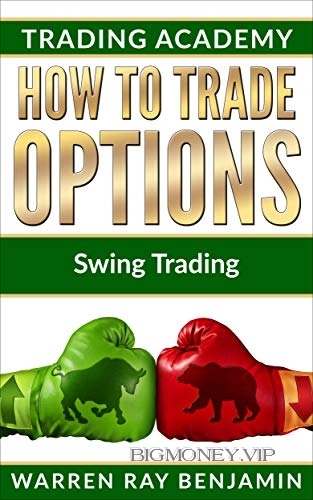How to Trade Options: Swing Trading by Warren Ray Benjamin

Chapter 1: Swing Trading – The Basics
Swing trading sounds suspicious, but as we'll see it's a solid middle-road
type of investing in the stock market that will appeal to many people.
Before we get into the specifics of what swing trading is, let's quickly
discuss its evil twin, day trading. How does that work? Very briefly, day
trading is a strategy that hopes to take advantage of a single day gain or
loss. Some people see it as a "fast money" or "get rich quick" approach to
stock market trading, but it's nothing of the sort. In order to engage in day
trading, you must have an account with a minimum of $25,000 with a
broker. So, if you're looking to make money on the stock market, but are
short on cash, day trading isn't going to be something you can use to get
rich.
Besides having a specific capital requirement, day trading requires active
participation in the stock market that involves getting deeply invested in
following financial news from many sources, trying to stay on top of
rumors and breaking news, and watching every little move of your stocks
throughout the day. You must do your due diligence with day trading. It also
involves having some highly technical skills that most people who invest in
the stock market would rather not bother with. The bottom line is that day
trading is serious, and high-risk business. For our purposes, the key
takeaway is that day trading attempts to leverage stock market gains (or
losses, if you are shorting a stock) that occur within a single trading day. At
the close, you're out of all your positions. This can be an advantage in that
you avoid overnight risks, stocks can often take hits with trading on Asian
and European markets.
We all know what long-term investing is. Basically, people try to set up a
diverse portfolio of stocks (and other securities like bonds, mutual funds,
etc.) in order to build long-term wealth. The definition of long-term might
vary from person to person, it might be five years, ten years, or even three
decades. Most people are probably thinking of building up some wealth
over the course of their adult working years, so we are probably talking
about a 25-30-year time window in most cases. Long-term investors may
not even actively manage a portfolio, they might let a professional take care
of that for them. If they do manage their own portfolio, they are going to
invest using techniques like dollar cost averaging that minimize risks and
take advantage of the average, longer-term behavior of the stock market.
Over time, the trend of the stock market is up – and that is what people are
after so they can build a ‘nest egg'.
Some of us are more impatient, and, like the active involvement in the
markets that day trading can provide. We love pouring over charts and
graphs, studying companies and stock movements. Is there some kind of
middle ground for these kinds of folks, who aren't up for day trading?
It turns out there is – and it's swing trading that we are after. Swing trading
simply involves holding stocks for multiple days. One of the goals of swing
trading is to give your investments some room for growth. With day
trading, you're taking advantage of short-term gaps that increase the value
of a stock. In swing trading, you're taking advantage of multi-day gaps up,
so that you can build more gains from your investments. People think that
day traders are the people who get rich on the stock market – and some do –




